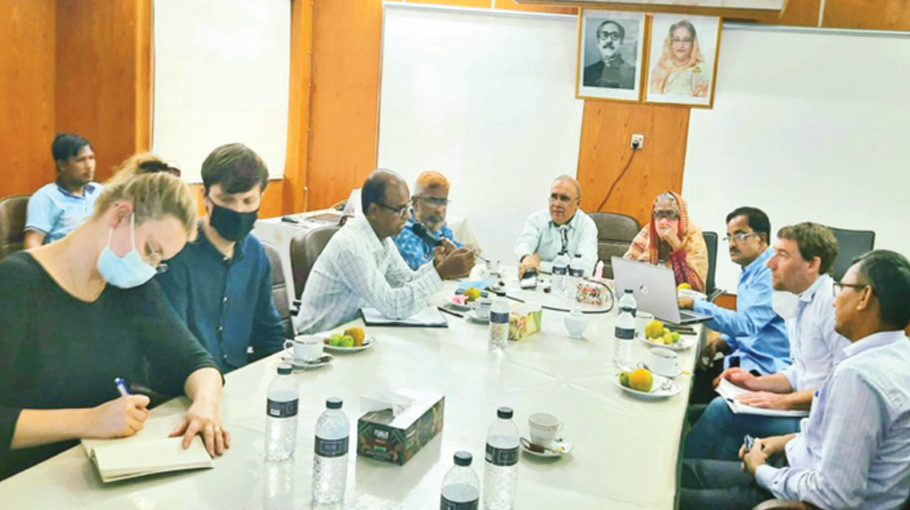Promoting aquifer recharge to enrich groundwater in Barind underscored

Importance should be given to promoting managed aquifer recharge in the Barind area to protect its underground water from further declining. The water-stressed area is turning into an extreme drought zone owing to scarcity of water due to various reasons, including the adverse impact of climate change and other environmental degradations. So, optimum aquifer recharge in the area has become crucial to protect its overall public health alongside the existing agricultural ecosystem through managing a groundwater basin efficiently and effectively.
Experts came up with the observation while addressing a view-sharing meeting between officials of the Barind Multipurpose Development Authority (BMDA) and the Joint Cooperation Programme (JCP) from Netherlands at BMDA conference hall in Rajshahi on Thursday.
BMDA Chairman Akhter Jahan addressed the meeting as chief guest with Executive Director Engineer Abdur Rashid in the chair. Additional Chief Engineer Shamsul Huda and Superintending Engineers Iqbal Hossain and Nazirul Islam were present on behalf of the BMDA.
On the other hand, senior advisor geology Ane Wiersma, water economist Tina Dewinkel and hydrologist Roel Helman joined the meeting on behalf of the JCP.
The meeting discussed and devised ways and means on how to promote aquifer recharge to mitigate the water scarcity problem in the dried barind area. Engineer Rashid said scores of canals, ponds and beels were re-excavated to increase the use of surface water in both irrigation and household purposes. "We have also started works for aquifer recharge taking the issue into special consideration," he added.
He also gave an overview of its ongoing projects and progress of those saying they have activated 4,332 inoperative deep tube-wells, installed 601 low lift pumps, re-excavated 2063-kilometer canals and 3257 derelict ponds. BMDA has constructed and expanded 12354.40-kilometer water distribution infrastructures alongside setting up 1579 drinking water supply installations, 572 dug wells and 749 cross-dams, which ensured a sound irrigation system.
It has been promoting surface water irrigation in many of the water-stressed areas in order to lessen the gradually mounting pressure on underground water.
The region scored significant progress in the crop production sector following the expansion of irrigation facilities along with supplying water from the re-excavated canals and ponds.
Yearly crop production has been enhanced to 34.32 lakh tonnes from 7.56 lakh, crop intensity to 226 percent from 117 percent while annual rainfall rose to 64 inches from 54.99 inches.




